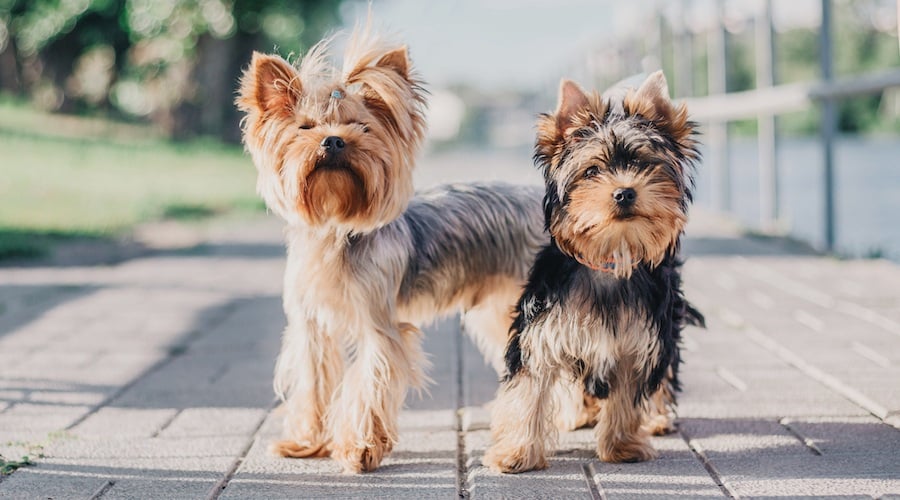The Best Service Dog Breeds, And How They Change Lives Every Day
When you purchase through links on our site, we may earn a commission. Here’s how it works.
The best service dog breeds don’t just comfort. They carry people through some of life’s most challenging moments.
Table of Contents
Service dogs lead the blind through chaotic intersections, interrupt panic attacks before they spiral, and alert them to invisible medical crises like seizures or dangerous blood sugar drops. They are trained not just to help or comfort. Service dogs anticipate, protect, and restore freedom to people whose lives depend on it.
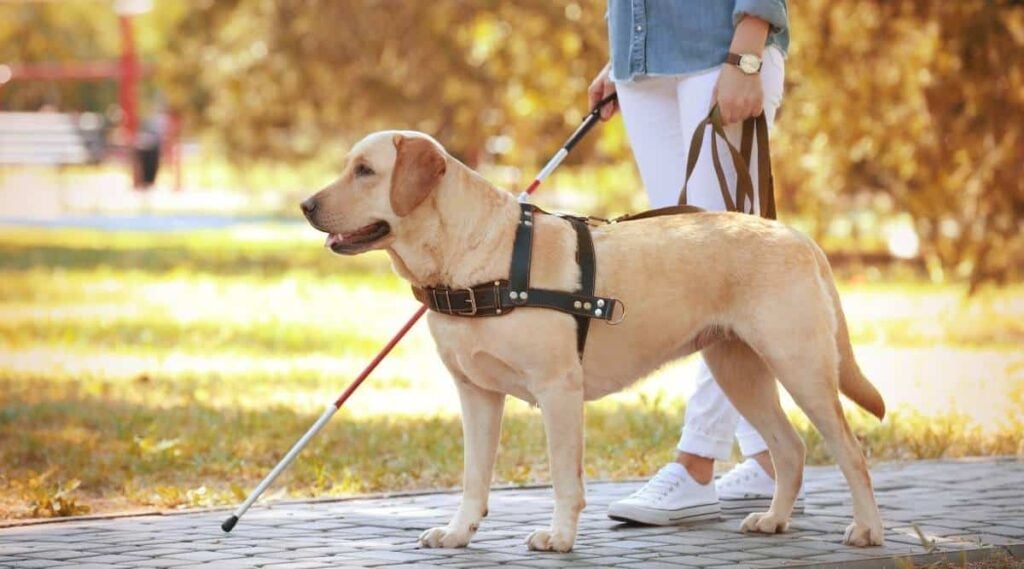
However, not all service dogs are created equal. The best service dog breeds are characterized by intelligence, strength, calmness, and a deep emotional intuition. Some excel at physical support, while others shine in psychiatric roles or medical alert tasks. Choosing the right breed means choosing a partner with the exact tools to meet a very specific need.
If you’re searching for a life-changing canine partner, this breakdown of the best service dog breeds will help you discover which ones are trusted, proven, and truly extraordinary at the work they were born to do.
Ancient Allies to Modern Heroes: The Service Dog Story
Imagine a dog that can guide you through a crowded city street, sense a seizure before it strikes, or ground you during a sudden panic attack. For people with disabilities, service dogs aren’t just companions, they’re lifelines. These remarkable animals restore independence, provide protection, and offer comfort in ways no machine or medication can.
Our bond with dogs is ancient, older than our cities, possibly even older than farming. Early humans and wolves may have formed their first fragile alliances through shared survival, with humans offering scraps and wolves offering security. Over time, those bonds deepened. Domesticated wolf pups became the earliest pets, protectors, and hunting partners. And in a very real sense, they helped us evolve.
That partnership grew deeper over the years. Dogs have pulled sleds, guarded flocks, and kept homes warm. But one of their most extraordinary roles has been serving those with special needs.
Evidence of service dogs dates back over 2,000 years. A fresco from the ancient Roman city of Herculaneum depicts a dog guiding a blind man, a testament to the long-standing partnership between these animals and humans in navigating the world.
Not Just Pets: The Legal Role of Service Dogs
Today, under the Americans with Disabilities Act (ADA), a dog must be trained to perform specific, essential tasks to qualify as a service animal. These are not therapy pets or emotional support animals; service dogs are highly trained professionals. They retrieve dropped items, brace unsteady individuals, alert to medical emergencies, and help people reclaim their daily lives.
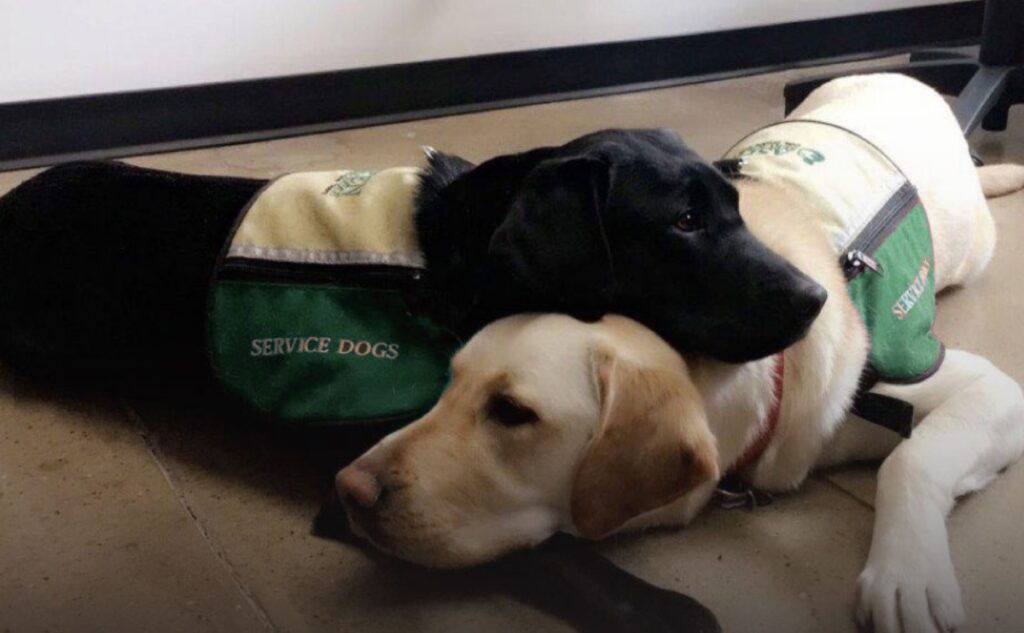
But not every dog is suited to every task. The right breed can make all the difference, matching physical strength, intelligence, and emotional intuition to the unique needs of a person with a disability.
Who Do Service Dogs Help?
Service dogs assist people with physical disabilities with tasks geared to the nature of their disability.
- A person with diabetes may have a dog trained to alert them when their blood sugar reaches high or low levels. An epileptic person’s service dog may help them remain safe during a seizure.
- Some of the physical disabilities that may qualify a person to have a service animal are blindness, deafness, paralysis, Multiple Sclerosis, autism, epilepsy, osteoporosis, scoliosis, allergies, asthma, arthritis, and other seizure disorders.
- Service dogs also assist people with specific mental disabilities. Service dogs can aid people with bipolar disorder, post-traumatic stress disorder (PTSD), anxiety, depression, mood disorders, eating disorders, neurocognitive disorders, psychotic disorders, and substance abuse disorders.
As our society’s needs evolve, so do the incredible roles we ask service dogs to perform. Once primarily guides for the visually impaired, these highly trained animals now assist with a wide range of physical, neurological, and even metabolic conditions.
One growing area is medical detection. With food allergies on the rise, some service dogs are now being trained to detect trace amounts of allergens like peanuts or gluten, potentially saving lives with every alert. But it doesn’t stop there. As mental health awareness increases, so does the use of dogs for psychiatric support.
Service dogs don’t just assist. They empower. As our understanding of disability expands, so does their role. Proving that the best service dog breeds aren’t just pets but purpose-driven partners helping people live fuller, safer, and more independent lives.
Service Dog vs Emotional Support Dog: What’s the Difference?
Before delving deeper into the best breeds for service work, it’s essential to address a common misconception. Many people confuse service dogs with emotional support animals; however, they serve very different roles, both legally and functionally.
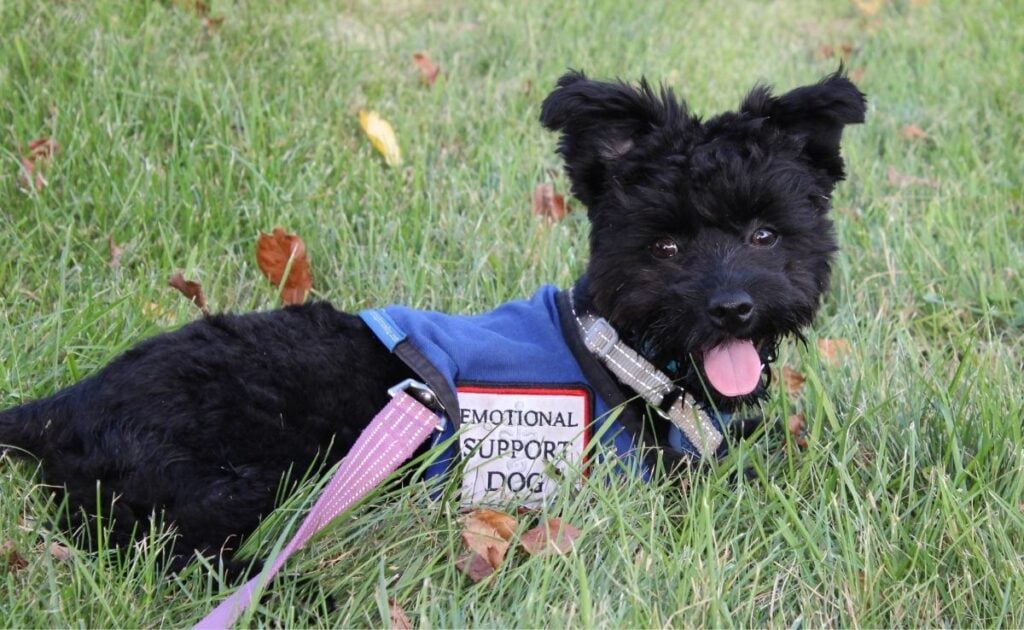
Service dogs are trained to assist individuals with disabilities in living more independently. People with visual impairments, seizure disorders, diabetes, and other disabilities use service dogs daily.
- Service dogs are working animals, not pets, and are specifically trained to perform tasks related to the person’s disability. For example, a service dog who assists a person with a seizure disorder may detect when a seizure is about to occur, alert the person, and help get them into a safe position.
- An emotional support animal (ESA) offers emotional support and companionship to individuals in need. ESAs can be any animal, but they are most commonly dogs.
Emotional support dogs qualify for no-pet housing. However, a physician’s letter may be required due to the amount of misuse of ESAs over the years. There is no formal training for dogs to be emotional support animals, which may explain why you see some that misbehave.
Service dogs are permitted in businesses, whereas emotional support dogs are not granted access to all public areas. The ADA doesn’t require any form of registration for service dogs, nor does it require registration for emotional support dogs.
You can register your ESA, which lists your dog in a database and gives you a letter from a medical professional stating your need for an emotional support animal (if you meet the pre-screening requirements). This letter may help you obtain no-pet housing as long as no inaccuracies are shared. CertaPet is an emotional support animal registration company that can help you get a housing letter and an air travel letter.
Confused About the Differences Between Service, Therapy, & Support Dogs?
It’s easy to confuse service dogs, therapy dogs, and emotional support animals; they all provide comfort, but their roles and legal rights differ significantly.
- Service dogs are trained to perform specific tasks for individuals with disabilities and are protected under the ADA.
- Therapy dogs offer emotional support in group settings, like hospitals or schools.
- Emotional support animals provide comfort at home but don’t have public access rights.
Learn the key distinctions between service dogs, therapy dogs, and emotional support animals, plus what each is legally allowed to do.
This Is What a Life-Changing Partner Looks Like (Video)
A service dog’s daily work is anything but ordinary. From opening doors to providing emotional support, watch how one devoted pup helps his owner navigate life with dignity and independence. This is more than training, it’s trust in action.
Which Breeds Make the Best Service Dogs, and Why
Choosing the right service dog isn’t just about picking a popular breed; it’s about finding the perfect match for a specific need. Different disabilities require different strengths, whether it’s physical size for mobility support, scent sensitivity for medical alerts, or emotional intuition for psychiatric assistance.
Below, we break down the best service dog breeds by the roles they’re uniquely suited for, so you can find the partner that fits your life, not just your lifestyle.
Need a Guide Dog? These Breeds Lead the Pack
Guide dogs must do far more than walk beside someone; they navigate complex environments, avoid obstacles, and make judgment calls to keep their handler safe. Labrador Retrievers, Golden Retrievers, and German Shepherds are consistently the top choices for this role thanks to their combination of size, strength, and intelligence.
Their calm demeanor, low reactivity, and strong work ethic make them ideal for the focused, high-responsibility job of guiding someone with visual impairments through busy streets, intersections, and unfamiliar terrain.
Labrador Retriever
One of the most commonly used breeds as service dogs is the Labrador Retriever. Originally a fisherman’s helper, the Labrador’s intelligence and attentiveness to his family make him a top candidate. The cheerful and eager disposition that makes him a favorite household pet helps him form a strong bond with his family.
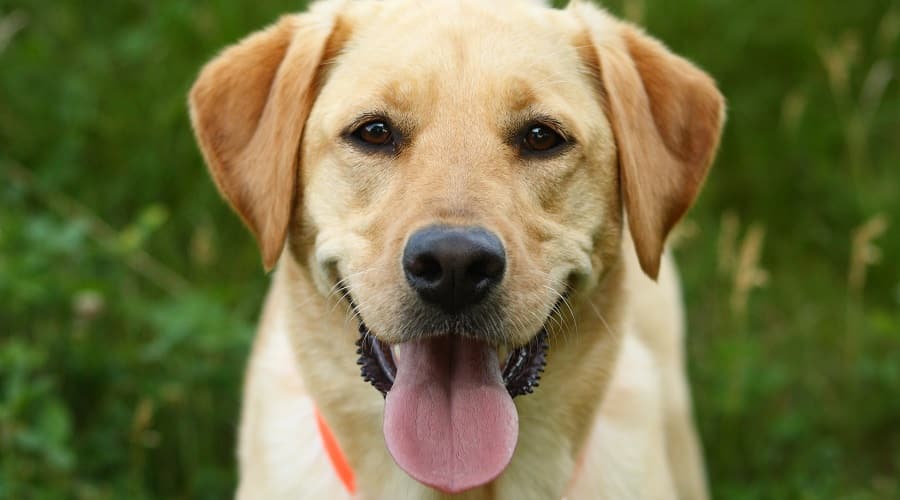
Some service dog providers use Labrador Retrievers exclusively because their characteristics make a successful match likely. For example, NEADS uses only people-oriented, well-mannered Labrador Retrievers between 50 and 75 pounds.
Labradors can meet the needs of individuals with various types of disabilities because they possess the size to perform tasks requiring strength, the instinct to retrieve, and the ability to sense subtle changes in physiology and emotional response.
Best For:
- Guide dogs for the visually impaired
- Mobility assistance
- Psychiatric support (PTSD, anxiety)
- Diabetic/seizure alert
Top Characteristics:
- Intelligent and highly trainable
- Friendly and eager to please
- Strong and athletic
- Sensitive to emotional and physiological changes
Golden Retriever
The Golden Retriever excels as a service dog. His friendly energy and desire to please make him an excellent guide dog for the blind. They are perfect for people of all ages and adaptable to most situations.
The Golden’s friendly disposition and high trainability make him one of the top choices in many categories. Their retriever instinct makes them natural mobility assistance dogs, bringing necessary items for their owners.
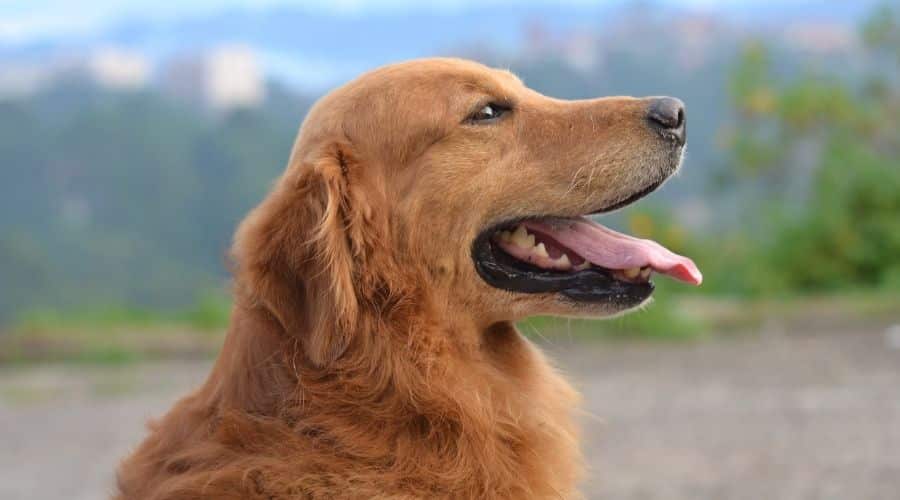
They are large enough to move items, open doors, and provide physical support for their person if necessary. Golden Retrievers have an always friendly attitude, making them a natural choice when their person is out among other people.
Best For:
- Guide dogs for the blind
- Mobility and item retrieval
- Emotional support in public environments
Top Characteristics:
- Extremely friendly and social
- High trainability and willingness to please
- Strong retriever instinct
- Reliable and consistent demeanor
German Shepherd
Thanks to their substantial size and strength, German Shepherds are especially effective for mobility assistance and vision support, helping guide or stabilize handlers with physical disabilities. However, their contributions extend far beyond physical strength alone.
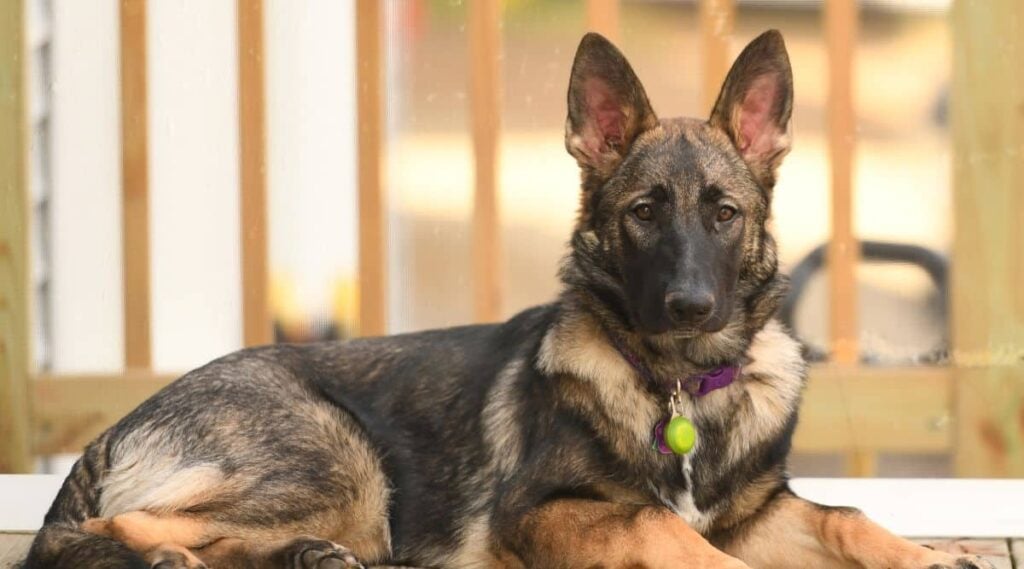
These dogs are remarkably perceptive and emotionally responsive, making them excellent at detecting shifts in their handler’s mood or behavior.
A German Shepherd service dog can provide calming physical pressure in moments of stress or anxiety by sitting on their handler’s feet, lying across their lap, or resting gently against their body. Their well-known protective instincts don’t manifest as aggression but as intense attentiveness, constantly monitoring their person’s environment and needs, ready to respond at a moment’s notice.
Best For:
- Mobility assistance
- Psychiatric service tasks (grounding, pressure therapy)
- Protective roles and situational awareness
Top Characteristics:
- Loyal, obedient, and highly trainable
- Strong and sturdy
- Intuitive and emotionally responsive
- Naturally protective
Poodle
Well known as one of the most intelligent and trainable breeds, Poodles have the additional benefit of coming in more than one size. Poodles work well for hearing or vision-impaired owners. Diabetic patients and those with seizure disorders or mental disabilities also benefit from the assistance of these highly trained dogs.

Although Standard Poodles can use their size to influence their owner physically, the Toy and Miniature Poodles are a better fit for indoor lifestyles and smaller living spaces.
All three sizes possess the social intelligence and trainability that make Poodles popular as service dogs. They are “friendly, patient, gentle, and at ease in most situations,” traits necessary when working with autistic children.
Best For:
- Hearing and vision impairments
- Psychiatric support (autism, anxiety)
- Diabetic or seizure alert
Top Characteristics:
- Exceptionally intelligent
- Hypoallergenic coat (good for allergy sufferers)
- Comes in multiple sizes for diverse environments
- Gentle, patient, and sociable
Built for Support: Top Breeds for Mobility Assistance
Mobility assistance dogs are trained to help individuals with physical disabilities regain independence and confidence in their daily lives. Whether offering balance support, aiding with transfers, or retrieving dropped items, these dogs must combine physical strength with a calm, steady temperament.
The breeds listed below stand out for their size, focus, and obedience, making them exceptional partners for individuals who require reliable support to move safely and independently.
Boxer
Boxers are known for their enthusiastic, upbeat personalities and deep devotion to their families. Their playful spirit makes them especially appealing in households with children, and their natural protective instinct helps them stay attuned to changes in their environment or their handler’s behavior.
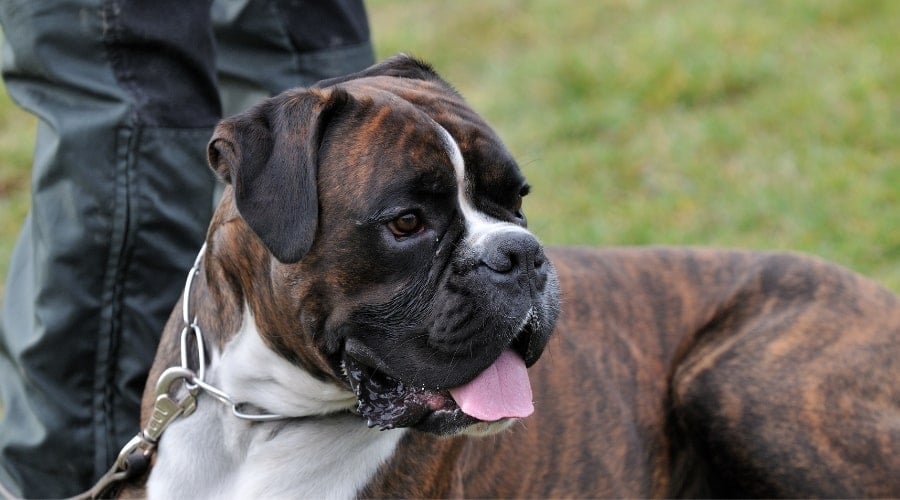
Beyond being affectionate family pets, Boxers are incredibly intelligent and capable problem-solvers. These qualities make them highly trainable for service work, particularly in high-energy or emotionally intense environments. Their steady nature allows them to remain calm under pressure, an essential trait for any service dog.
Boxers have been used successfully as both guide dogs and seizure alert dogs, capable of warning their handler before an episode begins. Their mix of strength, smarts, and emotional sensitivity makes them a unique and versatile candidate for service roles.
Best For:
- Guide dogs for the blind
- Seizure alert
- Companions for children
Top Characteristics:
- Optimistic and affectionate
- High energy and protective
- Intelligent and problem-solving
- Great with kids
Great Dane
With their towering size and calm demeanor, Great Danes are gentle giants with serious service potential. While their large stature may not suit every living space, it makes them an excellent fit for tasks that involve balance support, bracing, and even mobility stabilization for individuals with physical disabilities.
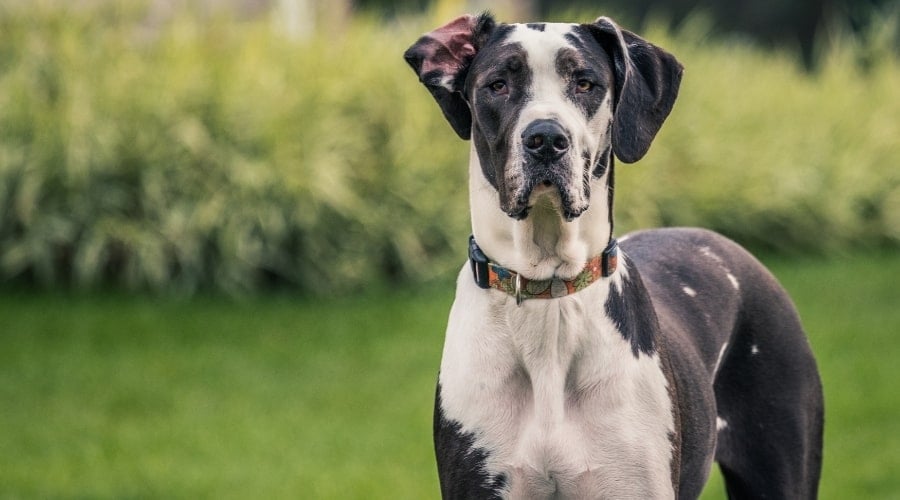
Great Danes excel in adaptive training, which means they can quickly assess unfamiliar situations and respond thoughtfully. They’re known to be friendly with strangers but form especially strong bonds with their handlers, often staying physically close and emotionally in tune.
Their calm, almost regal presence brings reassurance, and their sheer physical power allows them to assist with tasks that smaller dogs can’t manage. For individuals who require both emotional support and physical assistance, the Great Dane can be a steady and loving companion.
Best For:
- Mobility and balance support
- Adaptive emotional support
Top Characteristics:
- Giant size is ideal for physical tasks
- Loyal and calm
- Friendly with strangers
- Adapts well to new environments
Newfoundland
Often referred to as “nanny dogs,” Newfoundlands are famed for their sweetness, gentleness, and deep affection for children. Their giant, fluffy appearance may be intimidating at first glance, but their temperament is anything but; they’re calm, compassionate, and incredibly cuddly.
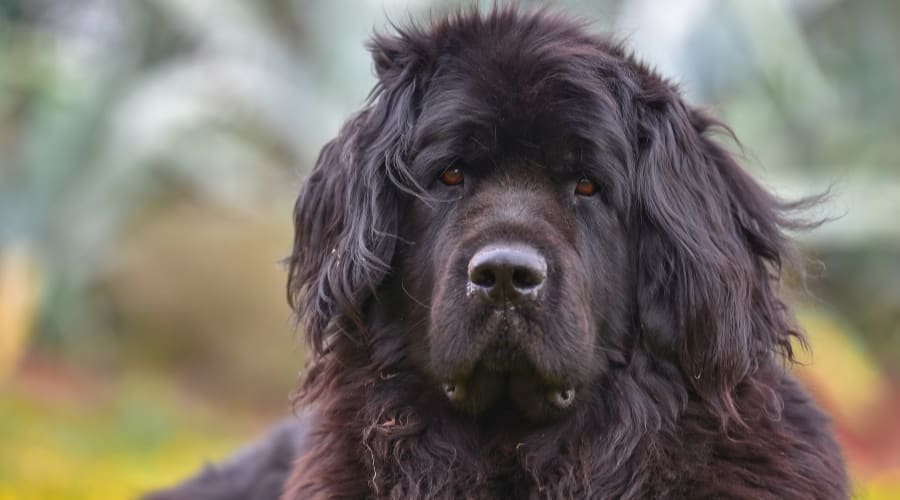
For families with autistic children, Newfoundlands can be a grounding presence, offering tactile comfort and a nonjudgmental emotional anchor. However, their size can be a limiting factor; they require space to move comfortably and may not be ideal for small homes or apartments.
They also come with some practical considerations: they shed heavily and have a shorter-than-average lifespan. But for those with the space and lifestyle to accommodate them, Newfoundlands offer an unmatched combination of heart, strength, and emotional warmth.
Best For:
- Emotional support for children (autism)
- Cuddly companions for stress relief
Top Characteristics:
- Large but gentle (“nanny dog”)
- Loves children and cuddling
- Low exercise needs
- Heavy shedding and a shorter lifespan
Bernese Mountain Dog
The Bernese Mountain Dog is another gentle giant that brings both strength and a deeply calm presence to service work. With their solid build, they’re well-equipped to assist with mobility tasks, helping their handlers stay balanced and supported throughout daily activities.
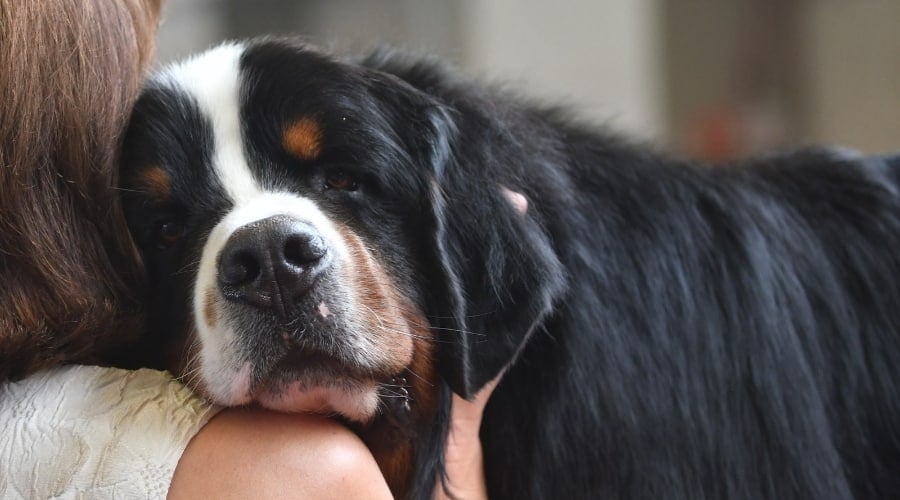
Berners tend to bond closely with one individual, making them especially reliable for people who need consistent one-on-one service. They’re generally friendly with strangers and get along well in family environments, adding to their versatility.
Like other large breeds, they do have some tradeoffs, namely, heavy shedding and a shorter lifespan. But their loyalty, dependability, and capacity to provide both physical assistance and emotional reassurance make them a favorite among service dog handlers who can meet their needs.
Even with their size, they are friendly with strangers and are relatively easy to train. Calm and dependable, they are indoor dogs but need at least thirty minutes of exercise each day to stay healthy.
Best For:
- Mobility support
- Emotional support within families
Top Characteristics:
- Calm and dependable
- Friendly with strangers
- Strong and sturdy
- Sheds heavily; short lifespan
Emotional Anchors: Breeds for Psychiatric Support (PTSD, Autism, Anxiety)
Psychiatric service dogs are uniquely trained to support individuals facing mental health challenges such as PTSD, severe anxiety, depression, or autism spectrum disorders. Unlike emotional support animals, these dogs perform specific tasks, like interrupting harmful behaviors, grounding their handler during a panic attack, or maintaining a protective buffer in social settings.
The breeds in this group are known for their emotional sensitivity, calm nature, and strong desire to connect with and comfort their human partners.
Cavalier King Charles Spaniel
Affectionate, gentle, and people-focused, the Cavalier King Charles Spaniel is an ideal choice for psychiatric and emotional support service roles. Their small size and calm demeanor make them perfect for lap tasks and low-stimulation environments.

These dogs thrive on closeness and form tight emotional bonds with their handlers. This makes them especially effective for individuals with anxiety, PTSD, or depression who benefit from a calming presence and physical contact. They are a good size for a child to handle and snuggle, and an easy fit on a lap to provide comforting weight.
They’re also highly adaptable to indoor living, making them well-suited for apartment dwellers or children needing comfort and companionship during emotionally intense moments.
Best For:
- Psychiatric service work (anxiety, stress)
- Therapy dog roles
Top Characteristics:
- Small, affectionate lap dog
- Calming and gentle
- Easily handled by children
- Great for apartment living
Pembroke Welsh Corgi
Small in size but big in personality, Pembroke Welsh Corgis are surprisingly effective service dogs, especially for children with autism. Their natural herding instinct helps them gently guide and monitor movement, which can be useful in preventing wandering.
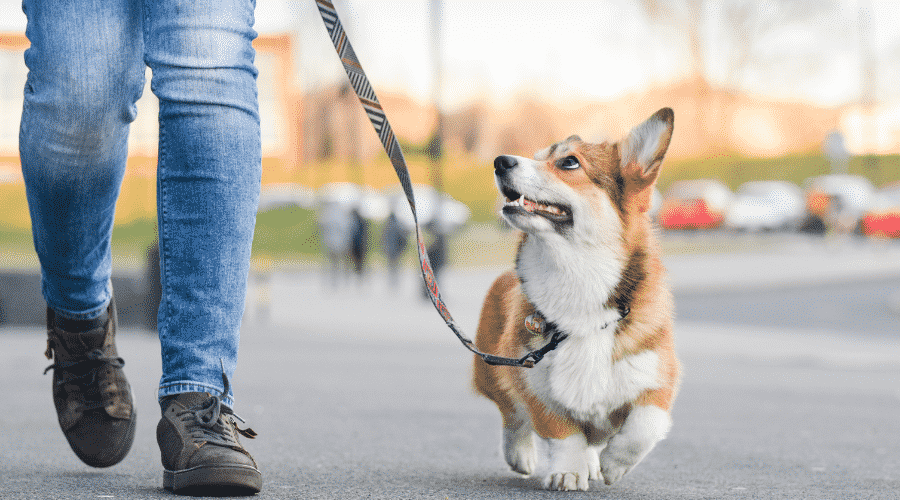
Corgis are intelligent, confident, and adaptable, thriving in various environments, including apartments, as long as they get adequate exercise. Their alertness and responsiveness make them great companions for those who need structured support.
They’re especially helpful in settings that require a small but active dog capable of performing light service tasks with consistency and enthusiasm.
Best For:
- Autism support (wandering prevention)
- Compact service roles
Top Characteristics:
- Herding instinct helps monitor movement
- Friendly, upbeat, and non-reactive
- Adaptable to small homes
- Requires regular exercise
Havanese
The Havanese is a compact companion dog that excels in psychiatric service roles, especially for individuals with anxiety, PTSD, or mood disorders. They’re emotionally sensitive and can quickly pick up on subtle behavioral shifts.
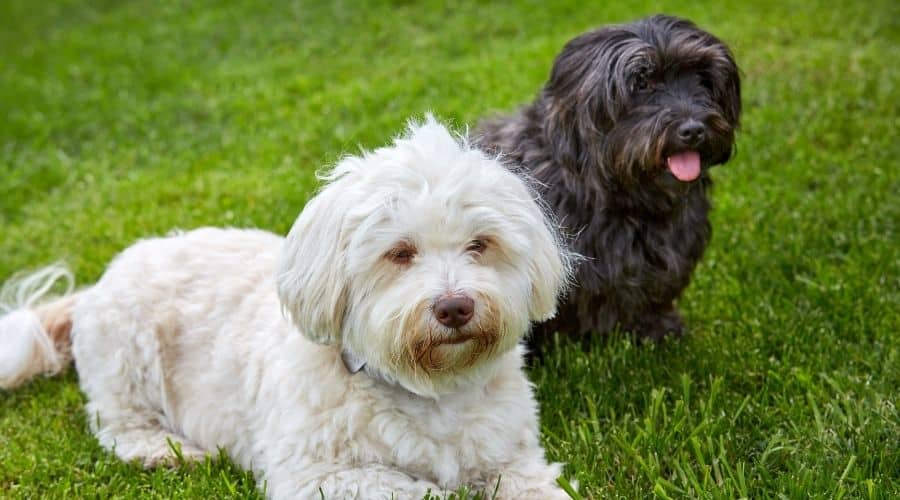
Known for their eagerness to please and quick learning ability, Havanese dogs are excellent for performing grounding tasks, responding to distress cues, and offering constant companionship in indoor environments.
Their small size makes them a practical choice for people in apartments or who may not have the physical ability to handle a larger service dog.
Best For:
- Psychiatric service support (anxiety, PTSD)
- Emotional regulation tasks
Top Characteristics:
- Strong bond with the handler
- Alert to emotional cues
- Fast learners
- Small and adaptable to indoor life
Beagle
Beagles are friendly, affectionate, and excellent with children, making them well-suited for emotional support and psychiatric service roles. Their upbeat energy helps brighten moods, and their social nature makes them great companions in public settings.

They’re also known for their exceptional sense of smell, which can be harnessed for medical detection tasks like alerting to allergens or changes in blood sugar.
Beagles are best suited for people who enjoy a more active dog and can manage their tendency to vocalize, which is important to consider for individuals sensitive to sound.
Best For:
- Emotional support for autism or PTSD
- Companions for veterans or children
Top Characteristics:
- Extremely affectionate and friendly
- Active and playful
- Great with children
- May bark excessively—consider for noise sensitivity
Collie
Collies are deeply loyal and emotionally perceptive dogs, often forming intense bonds with their owners. These traits make them an excellent choice for psychiatric support and emotional assistance, especially for children or adults on the autism spectrum.
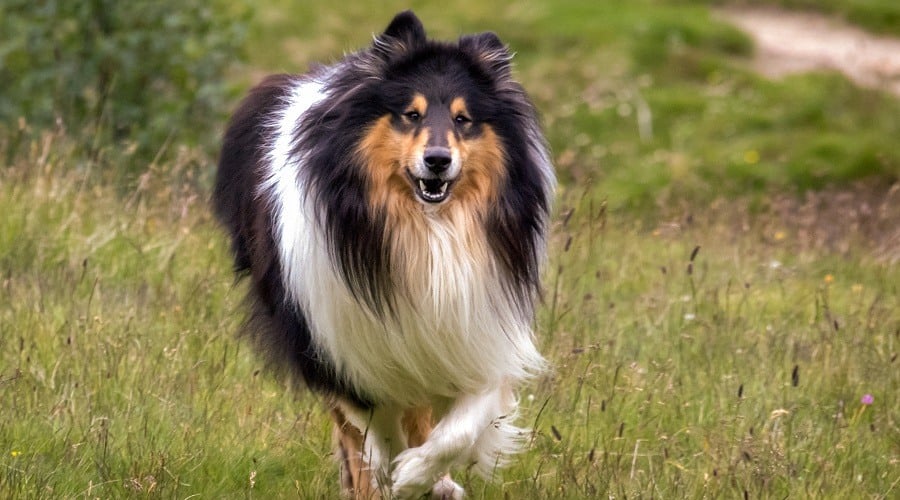
They possess a strong work ethic, high trainability, and a natural inclination to stay close to their family, making them ideal for those who need a grounding presence or gentle physical support.
Collies are also known for their soft demeanor and patience, allowing them to respond with calmness even in emotionally charged situations.
Best For:
- Emotional support for autism
- Light mobility assistance
Top Characteristics:
- Loyal and emotionally attuned
- Intelligent and responsive
- Gentle but playful
- Stays close to home and the owner
Pomeranian
Pomeranians may be tiny, but they pack a big punch in the service dog world, particularly in hearing alert or medical detection roles. Their sharp awareness and quick reflexes make them ideal for alerting to specific sounds or physiological changes.

They’re also emotionally sensitive and can offer comfort to individuals with autism or anxiety, especially in small living spaces where a larger service dog might not be practical.
While their size limits their physical task range, Pomeranians excel in alert work and emotional support roles requiring attentiveness and affection.
Best For:
- Hearing assistance
- Autism support
- Medical alert (diabetes, seizure detection)
Top Characteristics:
- Small and portable
- Intelligent and task-oriented
- Responds well to training
- Limited by physical strength
Doberman Pinscher
Often misunderstood due to their guarding reputation, Doberman Pinschers are actually deeply affectionate and loyal, making them ideal for psychiatric service work. They are highly responsive to emotional changes and physical distress.
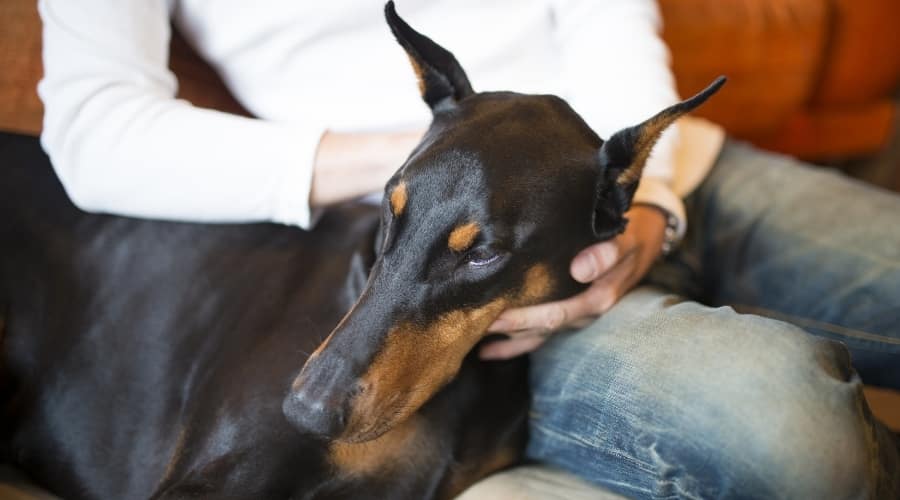
Their strength and speed allow them to step in during a psychiatric crisis or prevent self-harming behaviors by physically intervening with gentle but firm pressure.
With the right handler and professional training, Dobermans become powerful service dogs, offering both physical presence and emotional protection.
Best For:
- Psychiatric service support
- Preventive behavior during emotional crises
Top Characteristics:
- Loyal and protective
- Physically strong
- Calm and responsive to mood shifts
- Misunderstood reputation, but highly affectionate
Border Collie
Known for being one of the smartest breeds in the world, the Border Collie excels in service roles that require mental agility, independence, and quick problem-solving. They’re particularly effective in psychiatric or cognitive support roles.
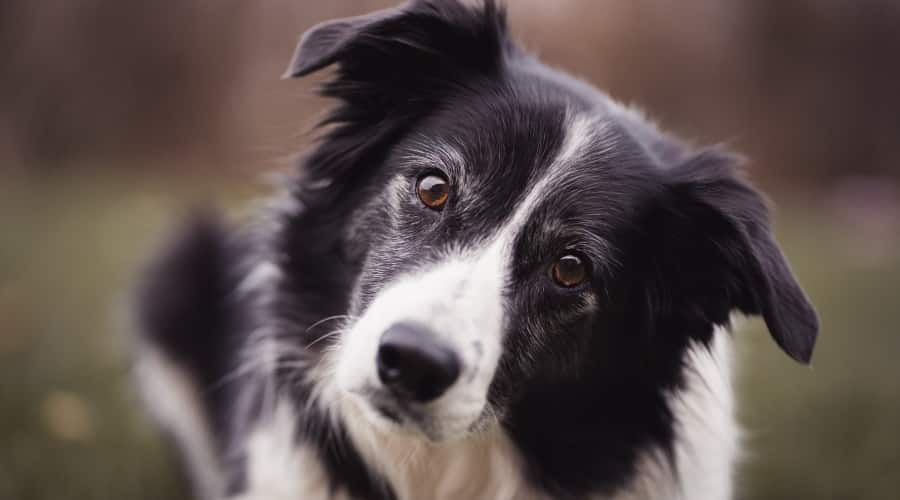
These dogs can be trained to anticipate behavioral changes, interrupt harmful behaviors, or assist individuals with autism or PTSD through proactive tasks.
Due to their high energy and need for stimulation, they are best suited for handlers who can keep them mentally and physically engaged.
Best For:
- Psychiatric service work (autism, PTSD)
- Cognitive behavioral support
Top Characteristics:
- Extremely intelligent and quick-thinking
- Intuitive and problem-solving
- Highly trainable
- Needs mental stimulation
Labradoodle
A hybrid of two top-tier service breeds, the Labrador Retriever and Poodle, the Labradoodle was originally bred to combine service capability with a hypoallergenic coat. The result is a friendly, intelligent, and highly trainable dog that adapts well to a variety of service roles.

Labradoodles excel in psychiatric support, mobility tasks, and medical alert roles. Their social nature and eagerness to please make them ideal for both public access situations and home-based assistance.
Thanks to their low-shedding coats, Labradoodles are a great fit for people with allergies, adding even more versatility to this already capable service breed. If you’re looking for a smaller-sized dog, consider the Mini Labradoodle.
Best For:
- Guide dog roles
- Psychiatric service support
- Allergy-friendly service homes
Top Characteristics:
- Smart and social
- Low-shedding coat
- Combining Labrador’s loyalty with Poodle’s intelligence
- Energetic and affectionate
Life-Saving Senses: Breeds for Seizure, Diabetes & Allergy Detection
Not all disabilities are visible, and some of the most life-threatening moments come with little warning. That’s where medical alert dogs come in. With noses powerful enough to detect chemical changes in the body, these dogs can sense everything from a drastic drop in blood sugar to an oncoming seizure or the presence of a life-threatening allergen.
The breeds listed here stand out for their extraordinary scent detection abilities, trainability, and responsiveness, making them true lifesavers in the truest sense of the word.
Bloodhound
Famous for their unmatched sense of smell, Bloodhounds are powerful service animals for scent-detection roles, including diabetic or seizure alert. Their tracking abilities have made them legendary in search-and-rescue, and those same instincts can be redirected to detect changes in a handler’s scent profile.
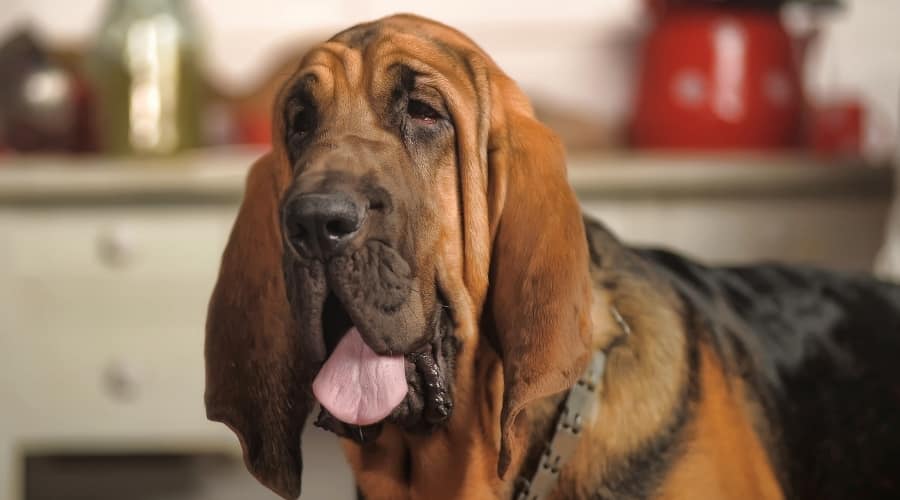
They also offer significant size and strength, making them useful for item retrieval and other physical support tasks. Their calm demeanor and loyalty make them emotionally attuned to their handlers.
However, Bloodhounds require space and regular physical activity, and their strong prey drive means they do best with experienced owners.
Best For:
- Item retrieval for mobility needs
- Emotional support via scent detection
Top Characteristics:
- World-class scent detection
- Strong and rangy
- Emotionally attuned to handlers
- Needs space and activity
Schnauzer (Miniature, Standard, Giant)
Schnauzers come in three sizes, but all share a lively intelligence, strong work ethic, and a deeply loyal nature. The Miniature is well-suited for psychiatric support and autism assistance, while the Standard and Giant Schnauzer sizes offer the strength needed for mobility tasks.
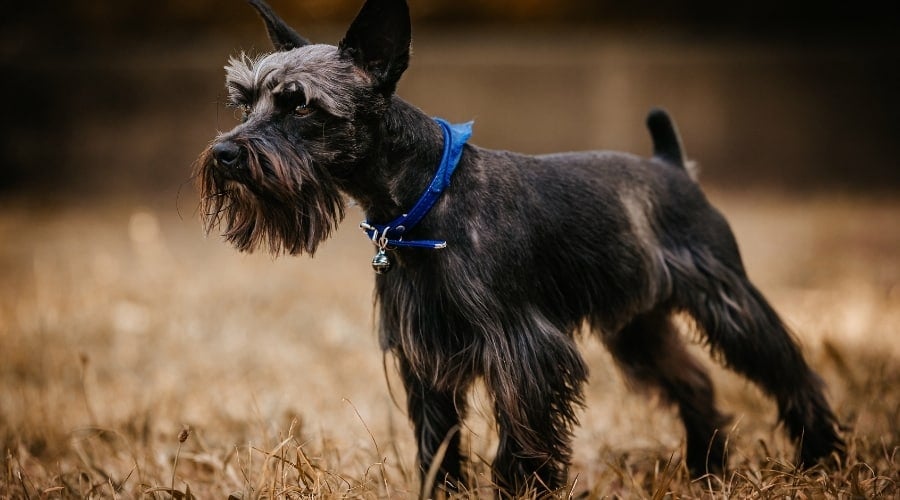
They’re friendly, adaptable, and love being around people. Their trainability and intuition make them dependable in both home environments and busy public spaces.
Whether for emotional regulation, physical assistance, or alerting, the Schnauzer’s diverse sizing and temperament give it a unique edge as a service dog.
Best For:
- Autism support
- Mobility assistance (Standard/Giant)
- Psychiatric support
Top Characteristics:
- Outgoing and friendly
- Adaptable to different environments
- Easy to train
- Different sizes for varying support needs
Yorkshire Terrier
Don’t let their tiny size fool you; Yorkshire Terriers are alert, responsive, and highly trainable for specific tasks like hearing alerts and medical detection. They excel in situations where space is limited or a discreet service dog is needed.

Yorkies are very emotionally connected to their handlers and can detect subtle shifts in mood or physical state, making them particularly useful for individuals with epilepsy or diabetes.
While they aren’t suitable for mobility support, they’re excellent in roles requiring sensitivity, portability, and a strong bond with their person.
Best For:
- Hearing alert
- Medical alert (seizure, diabetes)
- Emotional support
Top Characteristics:
- Tiny but alert and trainable
- Sensitive to physiological changes
- Great for small spaces
- Physically delicate
How to Choose the Right Service Dog: 5 Considerations
Choosing a service dog isn’t just about picking your favorite breed; it’s about finding a dog that can meet your specific physical, emotional, and environmental needs. Here are the most important factors to consider when making that life-changing decision:
1. Legal and Training Requirements
Under the Americans with Disabilities Act (ADA), a service dog must be trained to perform specific tasks directly related to a person’s disability. Emotional support or therapy animals do not qualify. For detailed training guidelines and certification resources, consider reputable programs like United Disability Services, Canine Companions, or Assistance Dogs International.
2. Size and Strength
If you need physical support, such as balance or bracing, the dog must be large and sturdy enough to handle the task. A mobility dog, for instance, should generally weigh at least 50% of the handler’s body weight. Conversely, if you’re in a small space or need a dog for psychiatric support, a smaller, more portable breed may be the better fit.
3. Temperament and Trainability
The best service dogs are calm, focused, and eager to work. Breeds that rank high in intelligence and biddability (like Border Collies and Poodles) tend to excel in complex training.
4. Energy Level and Environment
A Great Dane might be perfect for mobility work, but not in a small apartment. Likewise, an energetic breed like a Border Collie may struggle in a low-stimulation home unless given mental tasks. Match the dog’s activity level with your lifestyle and daily needs.
5. Grooming and Allergies
If allergies are a concern, low-shedding or hypoallergenic breeds like Poodles or Labradoodles may be ideal. Long-coated breeds like Collies and Bernese Mountain Dogs are beautiful but require regular grooming.
Support on Four Legs: Service Dogs for Veterans
For many veterans, service dogs are more than support animals; they’re trusted allies in the transition back to civilian life. These highly trained dogs help manage PTSD, mobility challenges, and other service-related disabilities, offering both emotional grounding and practical assistance. Learn more about how service dogs are changing the lives of veterans every day in our article on veterans and service dogs.

What People Ask Most About Service Dogs
Before making the decision to choose or train a service dog, many people have the same foundational questions, especially around legal rights, training, and breed suitability. Here are some of the most common concerns that come up when exploring life with a service dog.
Can any dog become a service dog, or must it be a specific breed?
While any breed can become a service dog with the right temperament and training, certain breeds are more commonly used because of their intelligence, stability, and responsiveness. It’s more about the individual dog’s traits than just the breed label.
How long does it take to train a service dog?
Training a fully qualified service dog can take 18 to 24 months. This includes basic obedience, public access behavior, and highly specialized task training. Some organizations provide pre-trained dogs, while others offer guidance for owner training.
Do service dogs need to be certified or wear a vest?
No. The ADA does not require service dogs to be registered, certified, or to wear any special gear. However, many handlers choose to use vests or ID tags to reduce public confusion and avoid confrontation.
Can I train my own service dog?
Yes. The ADA allows individuals to self-train their service dogs. However, this requires significant time, skill, and consistency. Partnering with a professional trainer or organization is often recommended for best results.
Keeping Your Service Dog Healthy
A service dog isn’t just a working animal; they’re a partner, a protector, and a vital part of your daily life. Keeping your service dog in top condition ensures they can continue to perform their job safely, effectively, and happily for years to come.
- Start with high-quality nutrition tailored to their breed, size, and energy needs. Working dogs often benefit from diets rich in lean proteins and essential fatty acids to support joint health and sustained focus. Regular exercise is just as critical, whether it’s structured walks, off-duty playtime, or mental stimulation through training refreshers.
- Routine veterinary care is essential. Keep up with vaccinations, parasite prevention, and annual wellness exams to maintain your pet’s overall health. Catching health issues early can extend your dog’s working life and improve their overall quality of life.
- Finally, consider investing in pet insurance. Service dogs perform demanding work and are at risk for injuries and chronic health conditions. Insurance can help you manage unexpected costs and ensure your dog has access to the care they need, without financial hesitation.
Have More Questions or Experience with Service Dogs?
Whether you’re considering your first service dog, training your own, or living with a lifelong canine partner, we’d love to hear from you. Drop your questions, stories, or tips in the comments below. Your insights could help someone else on their journey.

